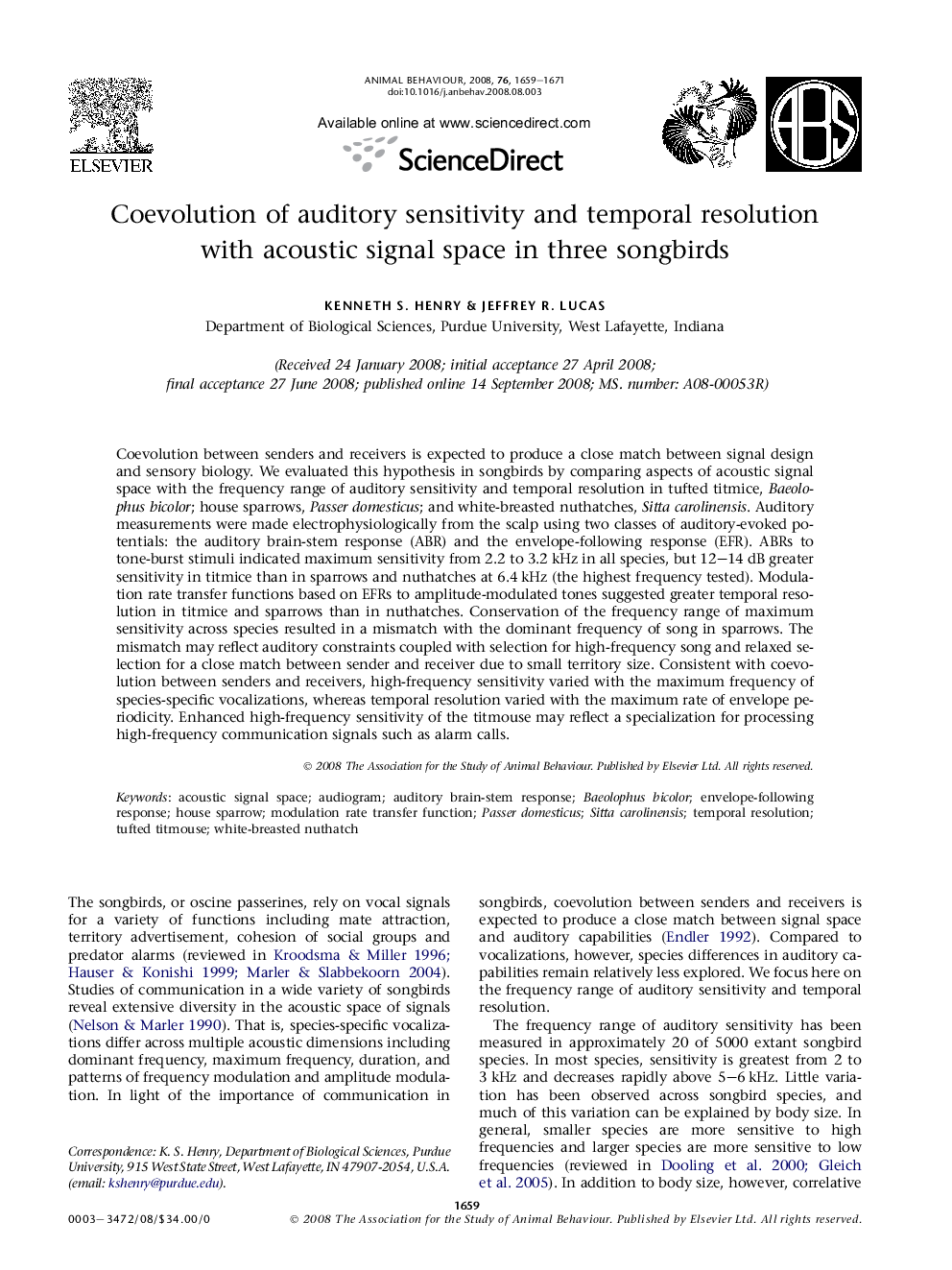| Article ID | Journal | Published Year | Pages | File Type |
|---|---|---|---|---|
| 2418641 | Animal Behaviour | 2008 | 13 Pages |
Coevolution between senders and receivers is expected to produce a close match between signal design and sensory biology. We evaluated this hypothesis in songbirds by comparing aspects of acoustic signal space with the frequency range of auditory sensitivity and temporal resolution in tufted titmice, Baeolophus bicolor; house sparrows, Passer domesticus; and white-breasted nuthatches, Sitta carolinensis. Auditory measurements were made electrophysiologically from the scalp using two classes of auditory-evoked potentials: the auditory brain-stem response (ABR) and the envelope-following response (EFR). ABRs to tone-burst stimuli indicated maximum sensitivity from 2.2 to 3.2 kHz in all species, but 12–14 dB greater sensitivity in titmice than in sparrows and nuthatches at 6.4 kHz (the highest frequency tested). Modulation rate transfer functions based on EFRs to amplitude-modulated tones suggested greater temporal resolution in titmice and sparrows than in nuthatches. Conservation of the frequency range of maximum sensitivity across species resulted in a mismatch with the dominant frequency of song in sparrows. The mismatch may reflect auditory constraints coupled with selection for high-frequency song and relaxed selection for a close match between sender and receiver due to small territory size. Consistent with coevolution between senders and receivers, high-frequency sensitivity varied with the maximum frequency of species-specific vocalizations, whereas temporal resolution varied with the maximum rate of envelope periodicity. Enhanced high-frequency sensitivity of the titmouse may reflect a specialization for processing high-frequency communication signals such as alarm calls.
